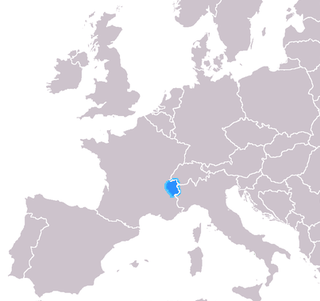Franco-Provençal dialect of Savoy, France
.mw-parser-output .hidden-begin{box-sizing:border-box;width:100%;padding:5px;border:none;font-size:95%}.mw-parser-output .hidden-title{font-weight:bold;line-height:1.6;text-align:left}.mw-parser-output .hidden-content{text-align:left}@media all and (max-width:500px){.mw-parser-output .hidden-begin{width:auto!important;clear:none!important;float:none!important))You can help expand this article with text translated from
the corresponding article in French. (February 2024) Click [show] for important translation instructions.
Machine translation, like
DeepL or
Google Translate, is a useful starting point for translations, but translators must revise errors as necessary and confirm that the translation is accurate, rather than simply copy-pasting machine-translated text into the English Wikipedia.
Consider
adding a topic to this template: there are already 1,473 articles in the
main category, and specifying|topic= will aid in categorization.
Do not translate text that appears unreliable or low-quality. If possible, verify the text with references provided in the foreign-language article.
You must provide
copyright attribution in the
edit summary accompanying your translation by providing an
interlanguage link to the source of your translation. A model attribution edit summary is Content in this edit is translated from the existing French Wikipedia article at [[:fr:Savoyard (langue)]]; see its history for attribution.
You may also add the template ((Translated|fr|Savoyard (langue))) to the
talk page.
For more guidance, see
Wikipedia:Translation.
Savoyard is a Franco-Provençal dialect of the Gallo-Romance family. It is spoken in some territories of the historical Duchy of Savoy, nowadays a geographic area spanning Savoie and Haute-Savoie, France and the Canton of Geneva, Switzerland. It has around 35,000 speakers today.
Some words
Several subdialects of Savoyard exist that exhibit unique features in terms of phonetics and vocabulary. This includes many words that have to do with the weather: bacan (French: temps mauvais); coussie (French: tempête); royé (French: averse); ni[v]ole (French: nuage); ...and, the environment: clapia, perrier (French: éboulis); égra (French: sorte d'escalier de pierre); balme (French: grotte); tova (French: tourbière); and lanche (French: champ en pente).
Linguistic studies
Savoyard has been the subject of detailed study at the Centre de dialectologie of the Stendhal University, Grenoble, currently under the direction of Michel Contini.
